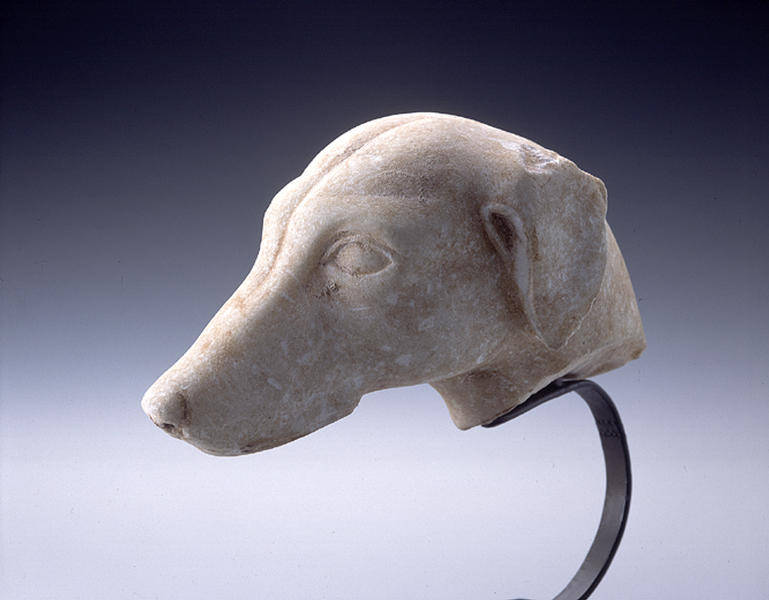犬頭部
- アテネ
- 紀元前4世紀頃
- 大理石
- H-12 D-11.5 W-24
解説(古代バクトリア遺宝展)
前4世紀頃
大理石
高12.0 cm 幅24.0 cm 奥行11.5 cm
ギリシャ美術で犬の大理石彫刻としては、アテネのアクロポリスで見つかった前6世紀のものが有名である。これはブラウロニアのアルテミス神に捧げられたものと考えられているが、鋭いまなざしと身構えて今にも飛び掛かりそうな緊迫感をもっている。それに対しこの犬の頭部は耳を垂れ、いささかうなだれがちの雰囲気に加え、やさしくむしろ物想いにふけるまなざしを感じるのである。
ギリシャでは前6世紀頃より墓地に石碑を建立する習わしが顕著となってきたが、初期の簡素な様式から前5~前4世紀と時代が降るにつれ複数の形象を組み合わせた場面が刻まれるようになった。その中には墓主とともにその愛犬をも刻んだものがしばしば見られるが、この大理石製の犬頭部もそうした場面を構成したものだったのではないか。
Catalogue Entry
ca. 4th century B.C.
Marble
H. 12.0 cm, W. 24.0 cm, Depth 11.5 cm
The most famous example of a dog carved in marble in Greek art is an example from the 6th century BC found at the Acropolis in Athens. This dog is thought to have been presented to the goddess Artemis of Brauronia, and its sharp gaze and figural handling all give a sense of tension to the form which looks as if it is about to leap up. By contrast, here the dog's ears lie flat, there is a somehow immensely pettable quality to this dog, who is shown with a gentle somehow pensive gaze.
There was a remarkable practice of building stone steles in graveyards from the 6th century BC onwards in Greece, and developing from their simple styles seen in the early period of this practice, by the 5th to 4th centuries BC they had expanded into multi-figured scenes. Images of the deceased and his beloved dog frequently feature in these graveyard scenes, and it seems likely that this marble dog's head was originally part of such a scene.
